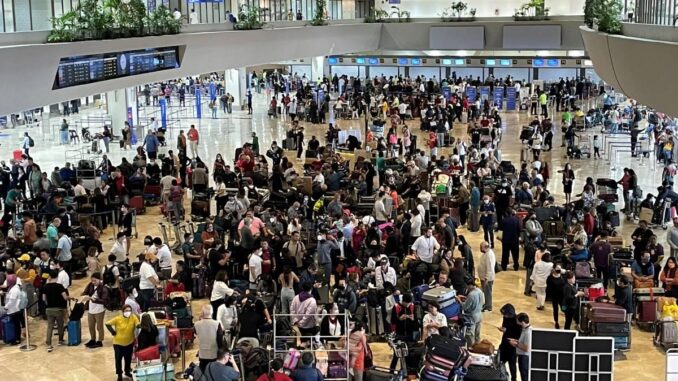
The government turned over Saturday the operation of the Ninoy Aquino International Airport (NAIA) to the San Miguel-led New NAIA Infra Corp., setting in motion the rehabilitation of the Philippines’ main gateway.
In a news release, the Department of Transportation (DOTr) said key officials of the agency and Manila International Airport Authority (MIAA) handed over the airport to its new private operator during a ceremony at NAIA’s Terminal 3.
“The baton has been passed and now it is our turn in NNIC to carry it forward to the finish line,” said NNIC general manager Lito Alvarez.
Transportation Undersecretary for Aviation Roberto Lim expressed support to NNIC, saying the takeover would be a precursor to a world-class and modernized NAIA.
“Today, we celebrate the competitive spirit of the winning consortium, which brings financial muscle, management expertise, and the technical operations strength and experience of Incheon Airport,” said Lim.
The turnover of NAIA’s rehabilitation, operations, and further development to NNIC, formerly SMC SAP & Co. Consortium, is seen to boost the airport capacity to meet growing demand by handling more flights and passengers, while improving service quality and compliance with International Civil Aviation Organization (ICAO) standards.
San Miguel-led NNIC is investing approximately P144 billion to manage and improve NAIA under a 15-year concession, extendable by 10 years, which would be contingent on meeting key performance targets.
The DOTr clarified that ownership of the airport will remain with the government.
The agency said that at the end of the concession period, NNIC will return to the government the operations of NAIA.
The government signed the landmark concession agreement for the NAIA Public-Private Partnership (PPP) project on March 18.
Among the expected improvements in NAIA that the traveling public and other stakeholders can expect include expansion of the Passenger Terminal Buildings (PTBs), additional aircraft parking bays, increase in vehicular parking slots, installation of world-class systems and technology, more food and beverage (F&B) and retail options, more convenient land transport connectivity, among others.
Furthermore, flight delays and cancellations due issues with airport facilities are expected to be significantly reduced.
NNIC Chairman Ramon Ang said, “A world-class airport means more jobs, more tourists and a much more stronger and prosperous Philippines.”
The consortium is committing to modernize NAIA, increasing its capacity from 35 million passengers to 62 million passengers.
Air traffic movement is also expected to be increased from 40 movements per hour to 48.
The rehabilitation is expected to generate at least 58,000 jobs for Filipinos.
Transportation Secretary Jaime Bautista said, “Today, we are finally doing what the government has wanted to do since the 1990s—to use public-private partnership (PPP) in enabling a private operator to manage the operations and maintenance of NAIA and make it truly world-class. We wish NNIC much success.”
The NAIA has been plagued by commuter woes over the years, from faulty air conditioning to parking lot fires to complaints of bed bugs and rats.
Just last February, the NAIA was ranked “fourth worst airport in Asia,” based on a survey done by a United Kingdom-based website. — VDV, GMA Integrated News





Be the first to comment